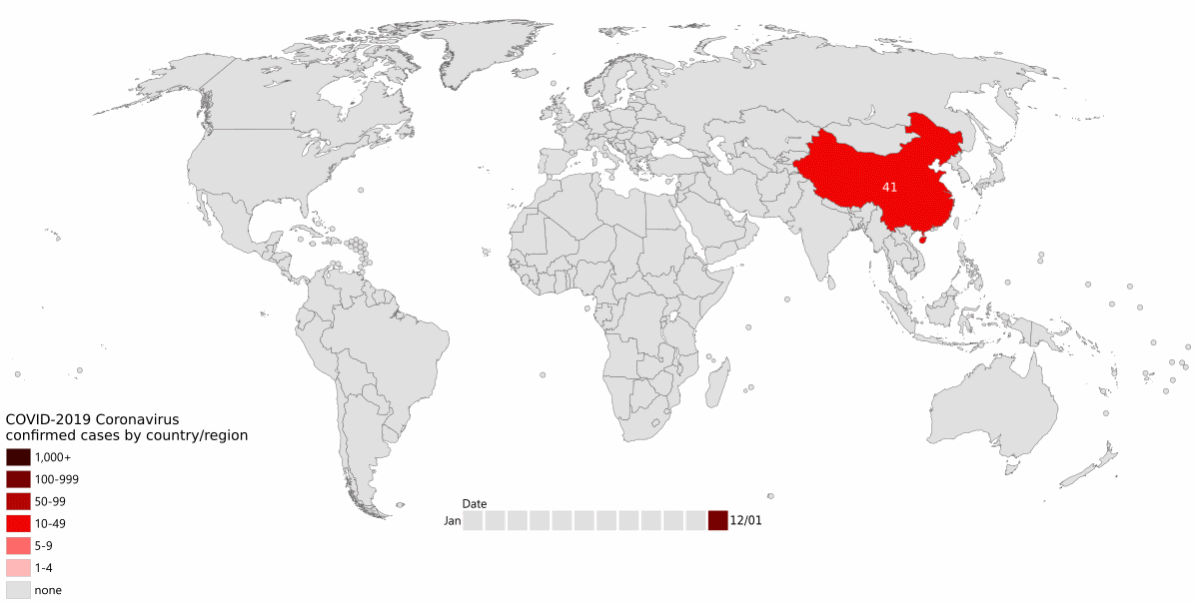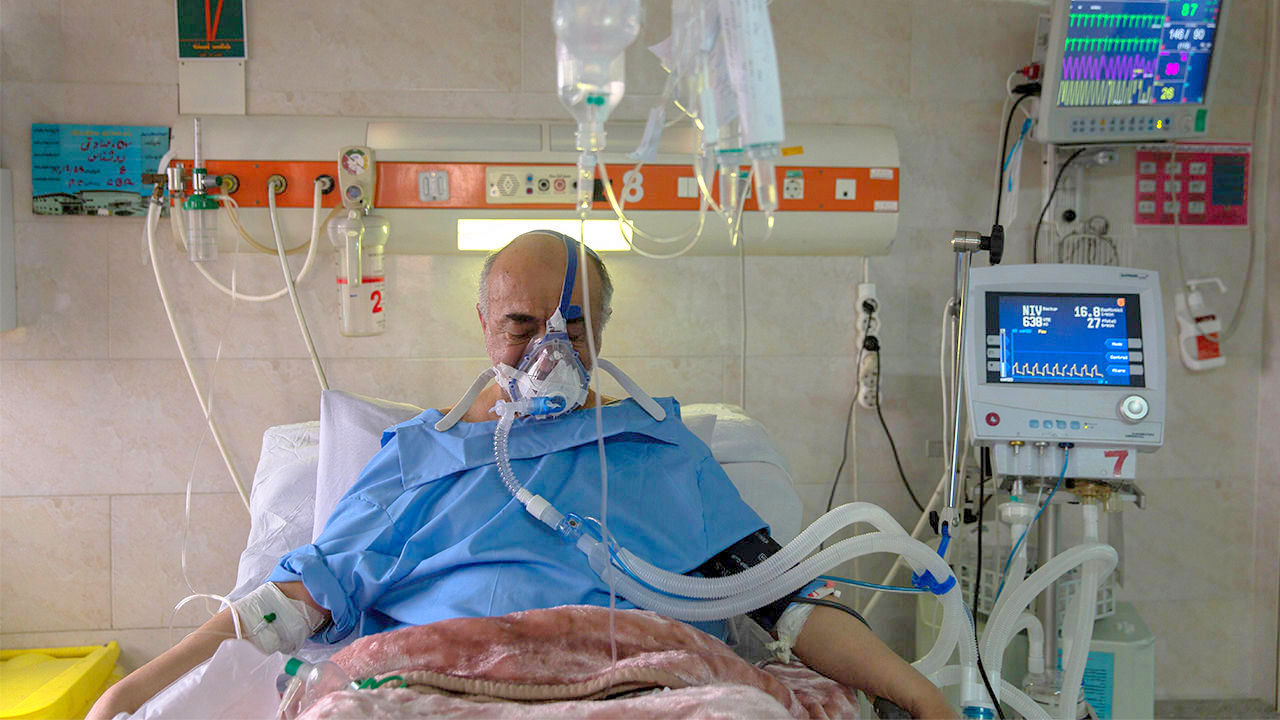

 Wikipedia Sitemap |
|
|  Useful Links 1 Useful Links 2 |

● 1. What is COVID-19?
● 2. COVID-19 Statistics and News Around the World
● 3. COVID-19 Articles
● 4. COVID-19 in the United States
● 5. COVID-19 in Canada
● 6. COVID-19 in China
● 7. COVID-19 in Other Countries
● 8. COVID-19 Videos
● 9. COVID-19 Coronavirus Web Albums
Division of categories are for convenience only. In many cases, topics will be overlapped.
Ventilation for COVID-19 (Posted by a nurse who works with ventilators) - This email was received on November 28, 2020. Info has not been verified. Source unknown.
"For people who don't understand what it means to be on a ventilator but want to take the chance to go out or back to work ... For starters, it is NOT an oxygen mask that is put over the mouth while the patient comfortably lies down and reads journals. Ventilation for Covid-19 is a painful intubation that goes down your throat and stays there until you live or you die.
It is done during anesthesia for 2 to 3 weeks without moving, often upside down, with a tube deposited from your mouth up to the air pipe and allows you to breathe to the rhythm of the lung machine. Patient can't talk or eat or do anything natural - the machine keeps you alive. Discomfort and pain they feel from this means that medical experts must administer sedatives and pain meds to ensure pipe tolerance as long as the machine is needed.
It's like being in an artificial coma. After 20 days from this treatment, a young patient loses 40% muscle mass and gets trauma in the mouth or voice cords, as well as possible lung or heart complications. It is for this reason that old or already weak people can't stand treatment and die. Many of us are in this boat ... so stay safe if you don't want to take the chance to end up here. This is NOT the flu!
They put a tube in your stomach, either through your nose or skin for liquid food, a sticky bag around your butt to collect diarrhea, one to collect urine, an IV for liquids and meds ... an A-line to monitor your BP, it is completely dependent on finely calculated doses, teams of nurses, CRNA [Certified Registered Nurse Anesthetist] and MA [Medical Assistant] to move your limbs every two hours and lie on a carpet circulating ice cold liquid to help reduce your 104° [Fahrenheit] temp.
All of this while your loved ones cannot even come to visit.
You will be alone in a room with your machine.
Or your mother will.
Or your father.
Or your son or daughter.
Or wife or husband.
But ... you think wearing a mask is uncomfortable and humiliating. Okay." ~ Unknown Nurse.

 Image source: Thailand Medical News |  Image source: Farhad Babaei, Magnus News | |
 Image source: Washington Post |  Image source: Yahoo! Life |
Related resources:
COVID-19 Treatments: Ventilators Now Being a Point of Contention as Some Experts Say It Might Harm Some COVID-19 Patients. Thailand Medical News, Apr. 16, 2020. "Currently, using ventilators to treat COVID-19 patients has emerged as one of the biggest medical dilemma. Supporting research studies and data is scarce and there aren't yet formal studies on the subject since the disease itself is so new and many do not have the benefit of hindsight. As many doctors are saying, it is also impossible to know for sure whether the patients placed on ventilators would have died anyway because of the severity of their conditions ...
New York University Langone Health has ... reported results from 4,103 coronavirus patients, of which nearly half were hospitalized and 445, or nearly 11%, needed a ventilator. The paper [posted April 11, 2020] shows that among the patients who needed a ventilator, 16 were discharged at the time of publication, 22 were able to come off a ventilator but were still in the hospital, 162 had died or were in hospice and 245, just over half, were still on a ventilator."
Elderly covid-19 patients on ventilators usually do not survive, New York hospitals report by Joel Achenbach and Ariana Eunjung Cha, Washington Post, May 19, 2020. "Most elderly covid-19 patients put on ventilators at two New York hospitals did not survive ... The study, published in the Lancet, is broadly consistent with clinical findings from China and Europe, and confirmed that advanced age is the greatest risk factor for a severe outcome, particularly if accompanied by chronic underlying diseases, such as hypertension, diabetes, heart disease and obesity.
The research focused on 257 critically ill adults, representing a little under one-quarter of the confirmed coronavirus patients admitted at the two hospitals in northern Manhattan between March 2 and April 1. The median age of critically ill patients was 62 years, and two-thirds of them were male.
Of the critically ill patients studied, 39 percent had died by April 28, and 37 percent remained hospitalized at Milstein and Allen hospitals.
No critically ill patients under the age of 30 died at the two hospitals, O'Donnell said, and only a small number of them had to be put on ventilators. But more than 80 percent of people over 80 who went on a ventilator did not survive, he said."
Exclusive: CDC projects U.S. coronavirus death toll could top 180,000 by Aug. 22 by Sharon Weinberger and Jana Winter, Yahoo! Life, July 31, 2020. [Note: Actual recorded COVID-19 deaths in the United States were 180,174 on August 22, 2020. See COVID-19 Coronavirus on the News Google Web Albums for COVID statistics on August 22, 2020.] "The new projection ... contradicts the more optimistic portrait that President Trump and others in his administration have painted about the pandemic. While the president in recent days has acknowledged the worsening situation in the United States, which has more cases than any other country in the world, he has also continued to insist the virus will simply 'disappear.'"
For survivors of severe COVID-19, beating the virus is just the beginning by Kelly Servick, Science, Apr. 8, 2020. "COVID-19's immediate assault on the body is extensive. It targets the lungs, but a lack of oxygen and widespread inflammation can also damage the kidneys, liver, heart, brain, and other organs ...
After any severe case of pneumonia, a combination of underlying chronic diseases and prolonged inflammation seems to increase the risk of future illnesses, including heart attack, stroke, and kidney disease, says Sachin Yende, an epidemiologist and critical care physician at the University of Pittsburgh Medical Center. His team reported in 2015, for example, that people hospitalized for pneumonia have a risk of heart disease about four times as high as that of age-matched controls in the year after their release, and about 1.5 times as high in each of the next 9 years. COVID-19 might prompt 'a big increase in these sorts of events,' he says.
Many COVID-19 patients who need a ventilator never recover. Although survival rates vary across studies and countries, a report from London's Intensive Care National Audit & Research Centre found that 67% of reported COVID-19 patients from England, Wales, and Northern Ireland receiving 'advanced respiratory support' died. A study in a smaller patient group in China found that only 14% survived after going on a ventilator ... Those who survive a long period on a ventilator are prone to muscle atrophy and weakness."